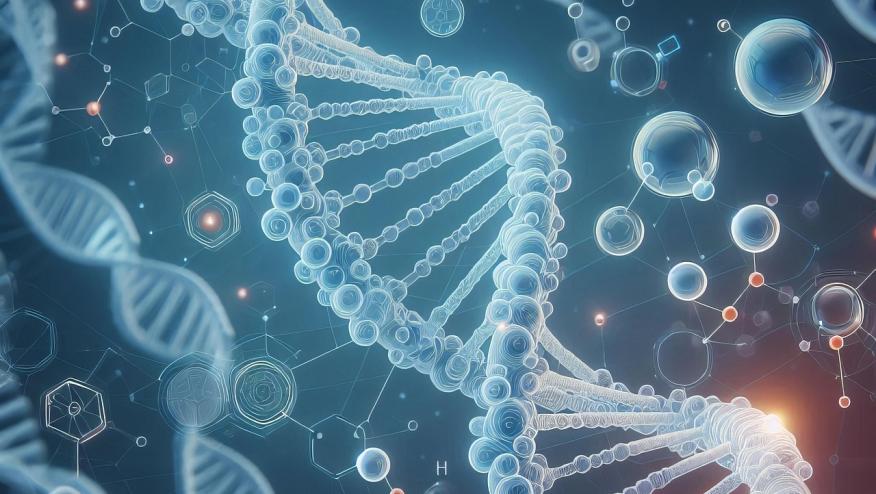Diagnoses via Immune ‘Fingerprints’ Save

Science and researchers at Stanford Medicine have reported the use of Mal-ID (machine learning for immunological diagnosis) to analyze B and T cell receptors (BCRs and TCRs) sequences from human blood, showing the ability to predict health status (healthy vs diseased) and discriminate between distinct autoimmune diseases or viral infections, and those who had received an influenza vaccine.
In a study of nearly 600 people — some healthy, others with infections including COVID-19 or autoimmune diseases including lupus and Type 1 diabetes — the algorithm the researchers developed, called Mal-ID for machine learning for immunological diagnosis, was remarkably successful in identifying who had what based only on their B and T cell receptor sequence and structures.
“The diagnostic toolkits that we use today don’t make much use of the immune system’s internal record of the diseases it has encountered,” said postdoctoral scholar Maxim Zaslavsky, PhD. “But our immune system is constantly surveilling our bodies with B and T cells, which act like molecular threat sensors. Combining information from the two main arms of the immune system gives us a more complete picture of the immune system’s response to disease and the pathways to autoimmunity and vaccine response.”
To develop a biological fingerprint of what diseases or conditions the immune system has been targeting, researchers assembled a dataset of over 16 million B cell receptor sequences and over 25 million T cell receptor sequences from 593 people with one of six different immune states: healthy controls, people infected with SARS-CoV-2 (the virus that causes COVID-19) or with HIV, people who had recently received an influenza vaccine, and people with lupus or Type 1 diabetes (both autoimmune diseases). Zaslavsky and his colleagues then used their machine-learning approach to look for commonalities between people with the same condition.
The researchers found that T cell receptor sequences provided the most relevant information about lupus and Type 1 diabetes while B cell receptor sequences were most informative in identifying HIV or SARS-CoV-2 infection or recent influenza vaccination. In every case, however, combining the T and B cell results increased the algorithm’s ability to accurately categorize people by their disease state regardless of sex, age or race.
The scientists applied a large language model trained on proteins, fed the model millions of sequences from B and T cell receptors, and used it to lump together receptors that share key characteristics — as determined by the model — that might suggest similar binding preferences. Doing so might give a glimpse into what triggers caused a person’s immune system to mobilize — churning out an army of T cells, B cells and other immune cells equipped to attack real and perceived threats.
B cells and T cells represent two separate arms of the immune system, but the way they make the proteins that recognize infectious agents or cells that need to be eliminated is similar. In short, specific segments of DNA in the cells’ genomes are randomly mixed and matched — sometimes with an additional dash of extra mutations to spice things up — to create coding regions that, when the protein structures are assembled, can generate trillions of unique antibodies (in the case of B cells) or cell surface receptors (in the case of T cells).
The randomness of this process means that these antibodies or T cell receptors aren’t tailored to recognize any specific molecules on the surface of invaders. But their dizzying diversity ensures that at least a few will bind to almost any foreign structure. (Auto-immunity, or an attack by the immune system on the body’s own tissues, is typically — but not always — avoided by a conditioning process T and B cells go through early in development that eliminates problem cells.)
Although the researchers developed Mal-ID on just six immunological states, they envision the algorithm could quickly be adapted to identify immunological signatures specific to many other diseases and conditions. They are particularly interested in autoimmune diseases like lupus, which can be difficult to diagnose and treat effectively.
Mal-ID may also help researchers identify new therapeutic targets for many conditions. In addition to aiding diagnosis of tricky diseases, Mal-ID could track responses to cancer immunotherapies and subcategorize disease states in ways that could help guide clinical decision making, the researchers believe.
“The beauty of this approach is that it works even if we don’t at first fully know what molecules or structures the immune system is targeting,” Boyd said. “We can still get the information simply by seeing similar patterns in the way people respond. And, by delving deeper into these responses we may uncover new directions for research and therapies.”










If you are a health practitioner, you may Login/Register to comment.
Due to the nature of these comment forums, only health practitioners are allowed to comment at this time.